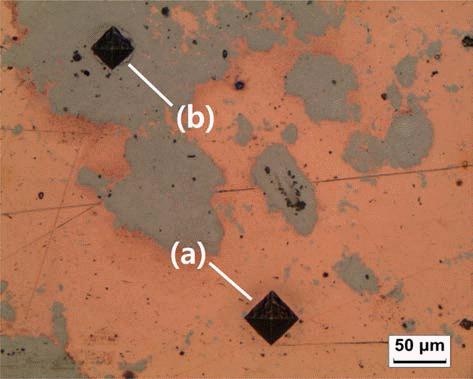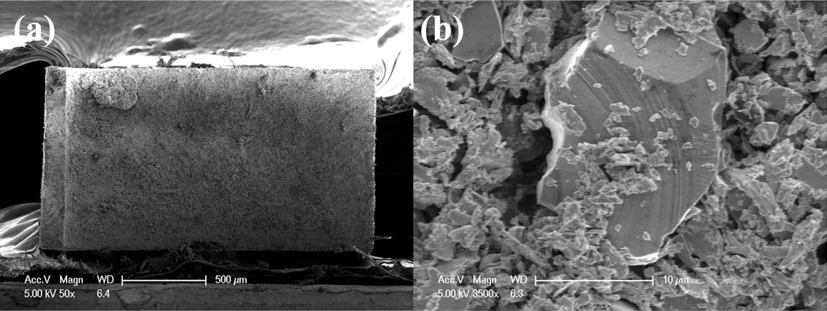Search
- Page Path
- HOME > Search
- [Korean]
- Manufacturing and Evaluation of the Properties of Hybrid Bulk Material by Shock-compaction of Nanocrystalline Cu-Ni Mixed Powder
- Wooyeol Kim, Dong-Hyun Ahn, Lee Ju Park, Hyoung Seop Kim
- J Korean Powder Metall Inst. 2014;21(3):196-201. Published online June 1, 2014
- DOI: https://doi.org/10.4150/KPMI.2014.21.3.196

- 412 View
- 0 Download
-
 Abstract
Abstract
 PDF
PDF In this study, nanocrystalline Cu-Ni bulk materials with various compositions were cold compacted by a shock compaction method using a single-stage gas gun system. Since the oxide layers on powder surface disturbs bonding between powder particles during the shock compaction process, each nanopowder was hydrogen-reduced to remove the oxide layers. X-ray peak analysis shows that hydrogen reduction successfully removed the oxide layers from the nano powders. For the shock compaction process, mixed powder samples with various compositions were prepared using a roller mixer. After the shock compaction process, the density of specimens increased up to 95% of the relative density. Longitudinal cross-sections of the shock compacted specimen demonstrates that a boundary between two powders are clearly distinguished and agglomerated powder particles remained in the compacted bulk. Internal crack tended to decrease with an increase in volumetric ratio of nano Cu powders in compacted bulk, showing that nano Cu powders has a higher coherency than nano Ni powders. On the other hand, hardness results are dominated by volume fraction of the nano Ni powder. The crystalline size of the shock compacted bulk materials was greatly reduced from the initial powder crystalline size since the shock wave severely deformed the powders.
- [Korean]
- Manufacturing and Evaluation of Properties of Nanocrystalline Ni bulk by Dynamic Compaction of Nano Ni powders using a Gas-gun System
- Wooyeol Kim, Dong-Hyun Ahn, Lee Ju Park, Jong-Il Park, Hyoung Seop Kim
- J Korean Powder Metall Inst. 2014;21(1):44-49. Published online February 1, 2014
- DOI: https://doi.org/10.4150/KPMI.2014.21.1.44

- 309 View
- 0 Download
-
 Abstract
Abstract
 PDF
PDF In this study, nanocrystalline nickel powders were cold compacted by a dynamic compaction method using a single-stage gas gun system. A bending test was conducted to measure the bonding strengths of the compacted regions and microstructures of the specimen were analyzed using a scanning electron microscopy. The specimen was separated into two parts by a horizontal crack after compaction. Density test shows that the powder compaction occurred only in the upper part of the specimen. Brittle fracture was occurred during the bending test of the compact sample. Dispersion of shock energy due to spalling highly affected the bonding status of the nanocrystalline nickel powder.
TOP
 kpmi
kpmi

 First
First Prev
Prev


